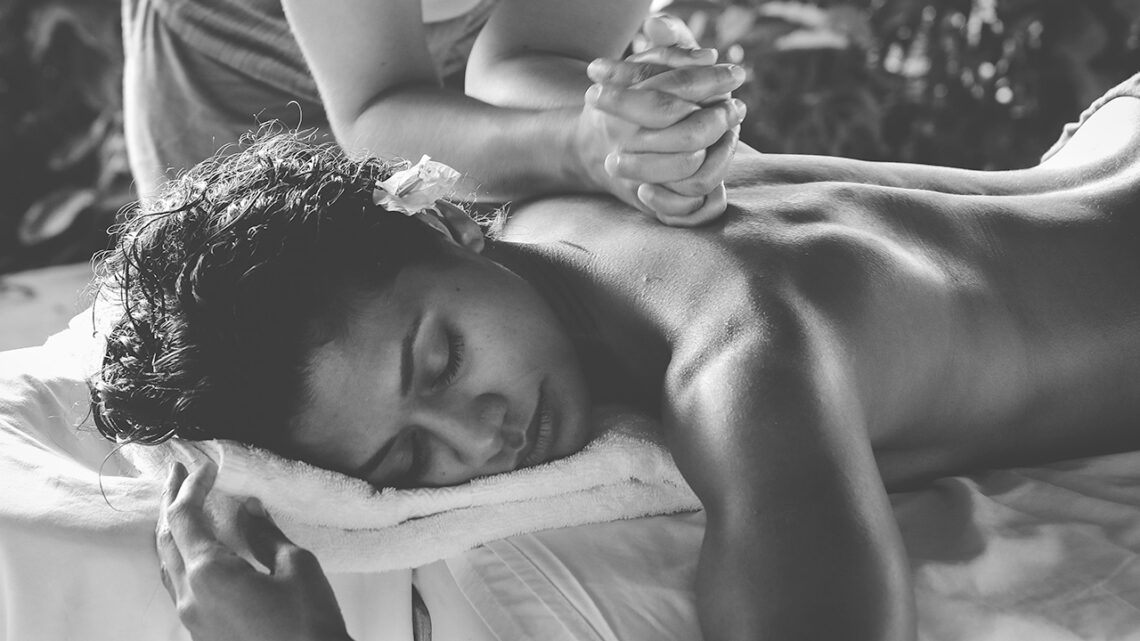The answer is yes. Perhaps a return to ancient wisdom and age-old remedies that have always served humanity well, could provide some direction.
Massage is perhaps one of the oldest healing remedies there is. It dates all the way back to the ancient Greeks, who were convinced of its therapeutic properties and the power of touch.
This was a time when our desire for beauty was realised through the pursuits of pleasure. At Thalia Skin, we believe in transporting ourselves back to when our bodies were honoured as a source of joy and endless wonder — a philosophy our products derive from.
A massage not only has connections to when mythological legends roamed free, but it is one of the rare treatments that heal both body and mind.
It helps repair our soft tissue while seducing us into a state of ultimate relaxation, where we’re able to briefly forget about the stressful world and travel to our very own oasis.
There’s a reason why the act of massage has remained for centuries — it’s a truly ancient power.
Benefits of massage for the body
Human beings are wired for touch, and newborn babies actually require it to thrive. Touch is the very first sense we acquire, and a secret weapon in many successful relationships!
We all know that if you’re sore or achy, then a massage can give genuine targeted relief — and it’s not hard to find research that backs this up.
For example, a study conducted in Australia found that a 10-minute muscle massage after a workout could reduce soreness by up to 30 per cent.
Committing to regular massages is a great tool for pain management. You can focus on specific problem areas, or simply treat your whole body, gradually loosening the muscles by increasing the blood flow to them.
The action of massage can help alleviate pain tied to injuries, arthritis and a range of other conditions and, after a few sessions, you may find yourself reducing the number of pain medications you buy.
This ancient therapy doesn’t just provide short-term pain release, but also ongoing muscular and posture problems.
Let’s face it, we’ve all caught ourselves slouching over the desk at work. This poor posture can cause a lot of tension in the back and neck — which is no good for our body.
The good news is, bad posture can be corrected with regular massages. The therapy itself will loosen the muscles and alleviate any pain caused by your bad posture. This will, in turn, enable your body to position itself in its natural — and pain-free — position.
The power of the massage doesn’t stop there — it can even help strengthen the immune system. It is a well-known fact that individuals who experience high levels of stress are more vulnerable to illness and injury. When stress is combined with sleep disturbances and poor nutrition, the impact is directed at the body’s immune system.
Studies have indicated that regular massage sessions not only help reduce stress but can also boost the immune system’s cytotoxic capacity (activity level of the body’s natural ‘killer cells’) and enhances the body’s ability to deliver nourishment.
Benefits of massage for the mind
Massage is therapeutic for the mind as well as the body. It can help relieve anxiety, depression and a range of other mental health issues.
It can also help people deal with a pre-existing medical condition. For example, a study, published in the International Journal of Neuroscience, found that women diagnosed with breast cancer who received massage therapy three times a week reported being less depressed and less angry.
The reasons behind this are perhaps due to the fact that a massage can increase our ‘feel good’ hormones. A University of Miami study found that levels of the stress hormone cortisol dropped 31 per cent following a rubdown, while levels of feel-good hormones like dopamine and serotonin increased roughly 30 per cent.
This effect on stress-related chemicals has been seen to have a profound impact on a number of pathologic conditions, including dementia.
Three separate studies by the Applied Psychophysiological Biofeedback Journal, Journal of Clinical Nursing and the International Journal of Nursing Studies all showed a variety of massages improved agitation, stress and even cognition and brain function.
Types of massage
There’s a seemingly infinite number of massage types out there. There’s remedial massage, Swedish massage, Thai massage, chi massage, lomi lomi massage, tantric massage and nuru massage, just to name a few.
Without going through each one of their individual benefits, we can generally separate them into four main categories:
- Swedish massage — This is a gentle form of massage that uses long strokes, kneading, deep circular movements, vibration and tapping to help relax and energise you.
- Deep massage — This massage technique uses slower, more forceful strokes to target the deeper layers of muscle and connective tissue, commonly to help with muscle damage from injuries.
- Sports massage — This is similar to Swedish massage, but it’s geared toward people involved in sports activities to help prevent or treat injuries.
- Trigger point massage — This massage focuses on areas of tight muscle fibres that can form in your muscles after injuries or overuse.
It can often be a matter of trial and error to see which massage suits your body best. A good masseuse or masseur will be able to ascertain this by listening to you and your body. Remember — a massage is supposed to be relaxing and enjoyable for you, so don’t lie through a treatment that isn’t beneficial.
Once considered an alternative or fringe approach, massage therapy is now available to all who want to bask in its healing properties — just as the ancient Greeks did all those years ago. So get out there and… relax.
To your blossoming xxx




